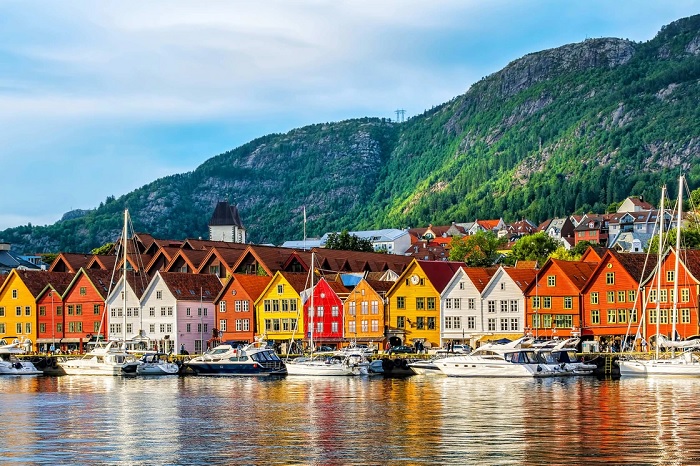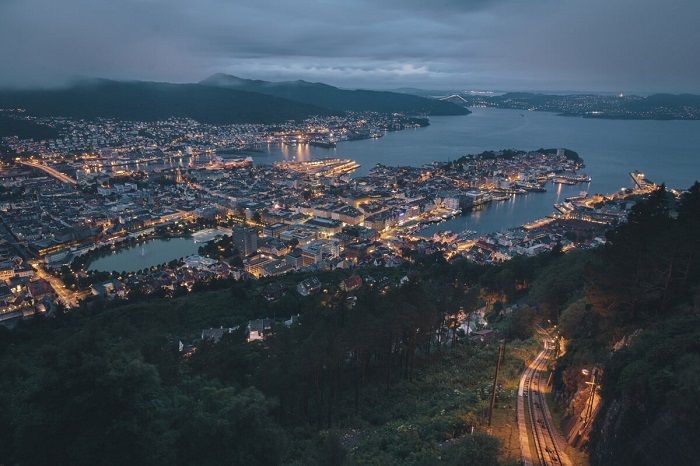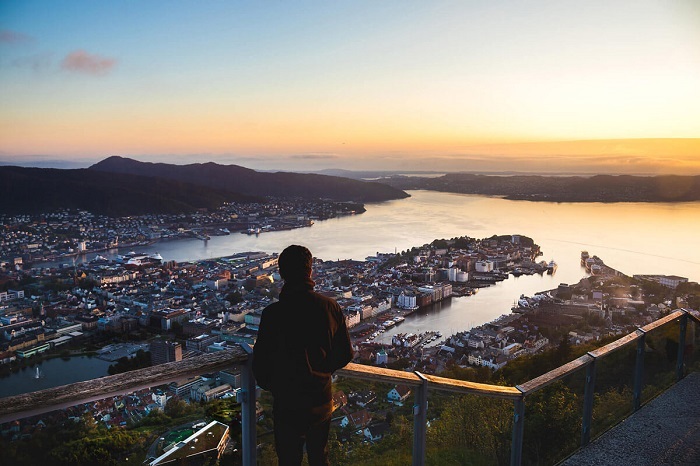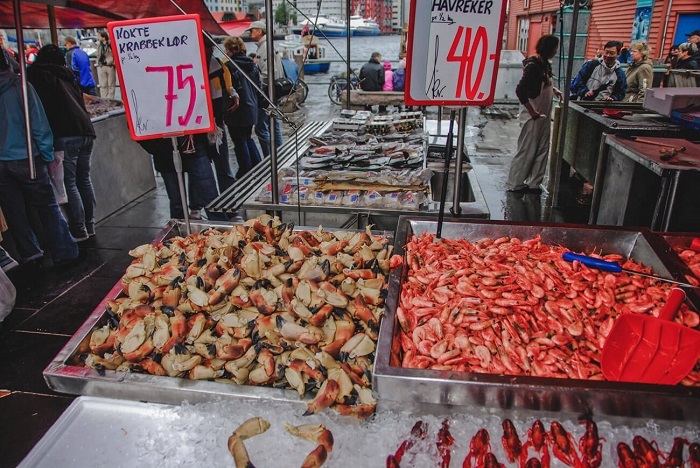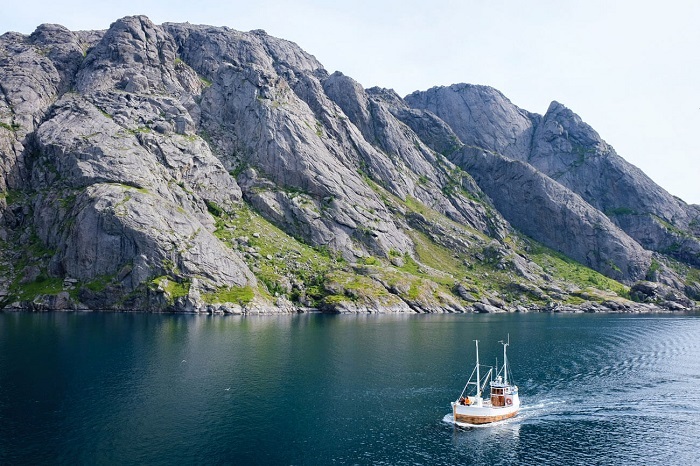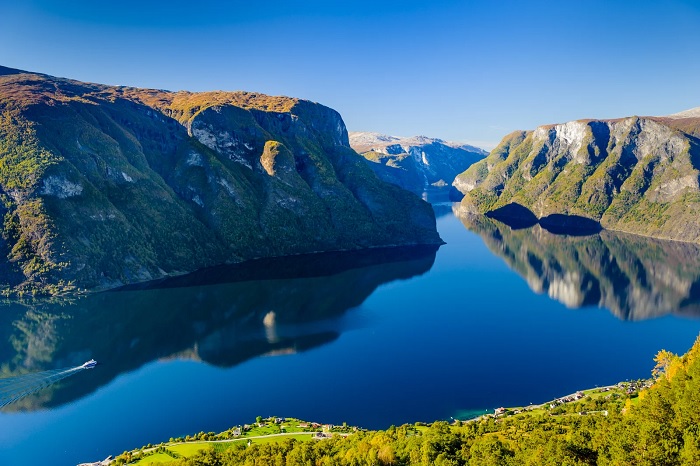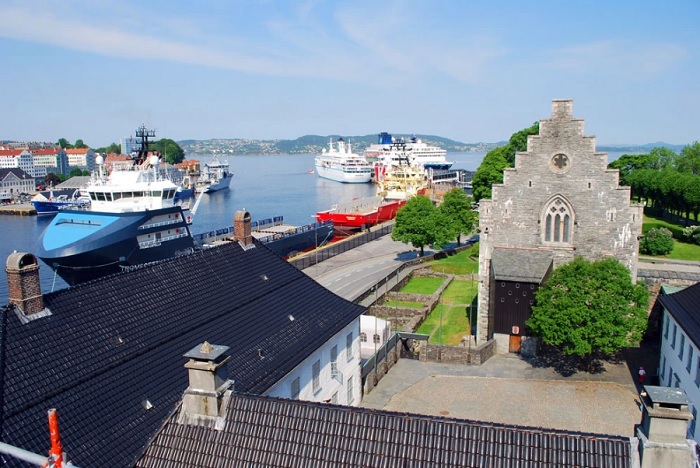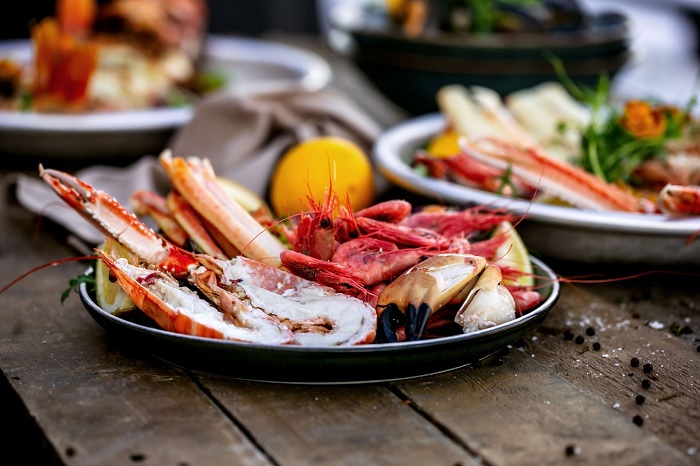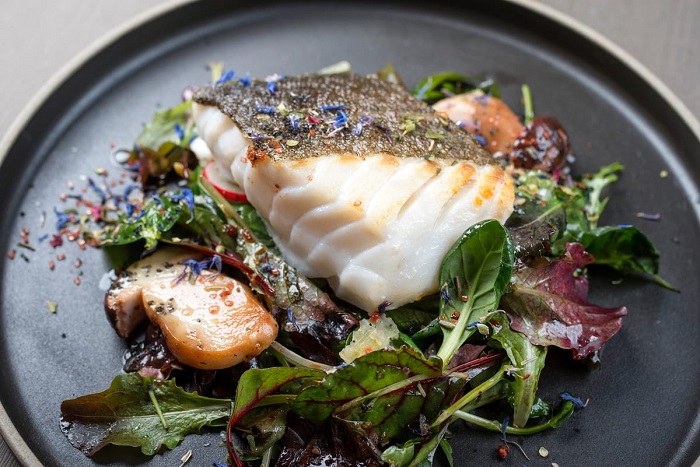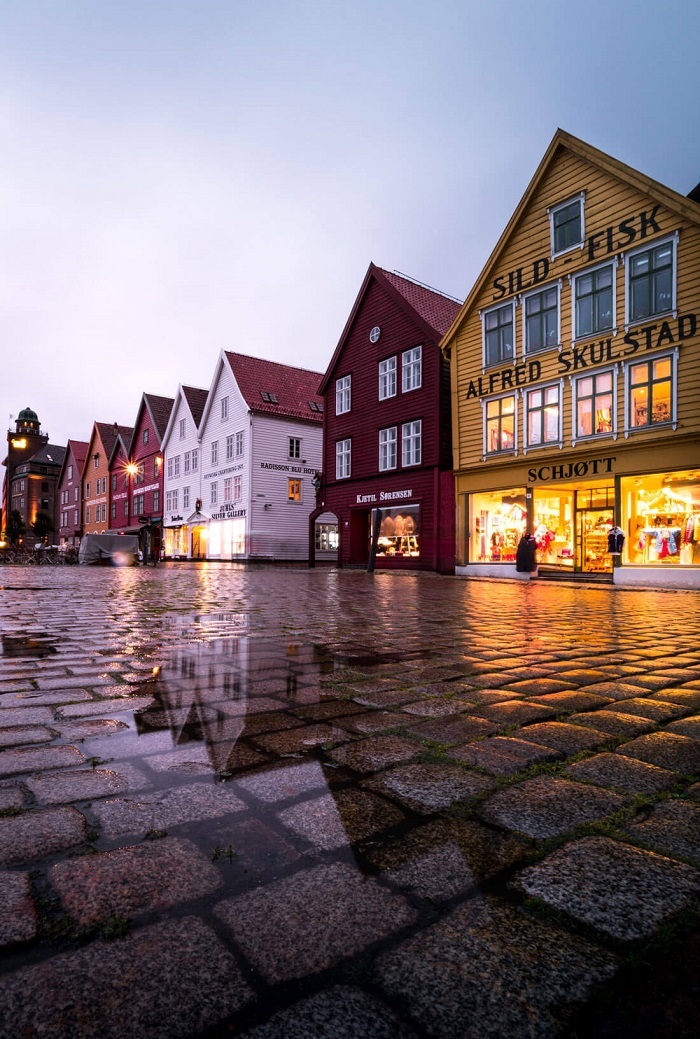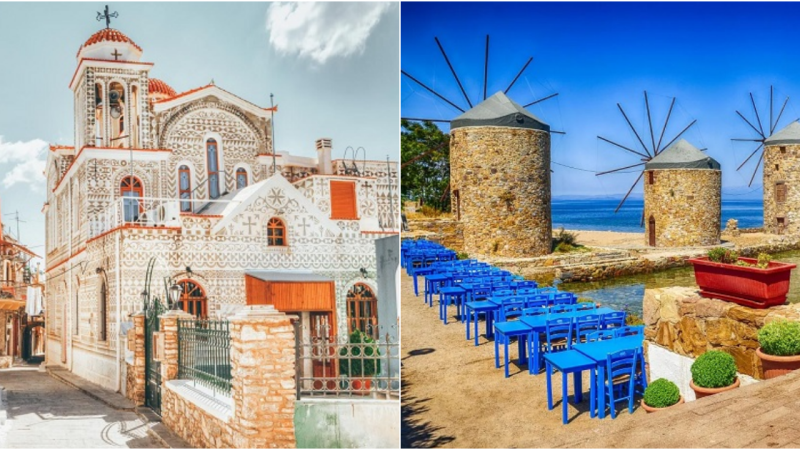Traveling to Bergen, Norway, and experiencing the beauty of Northern Europe
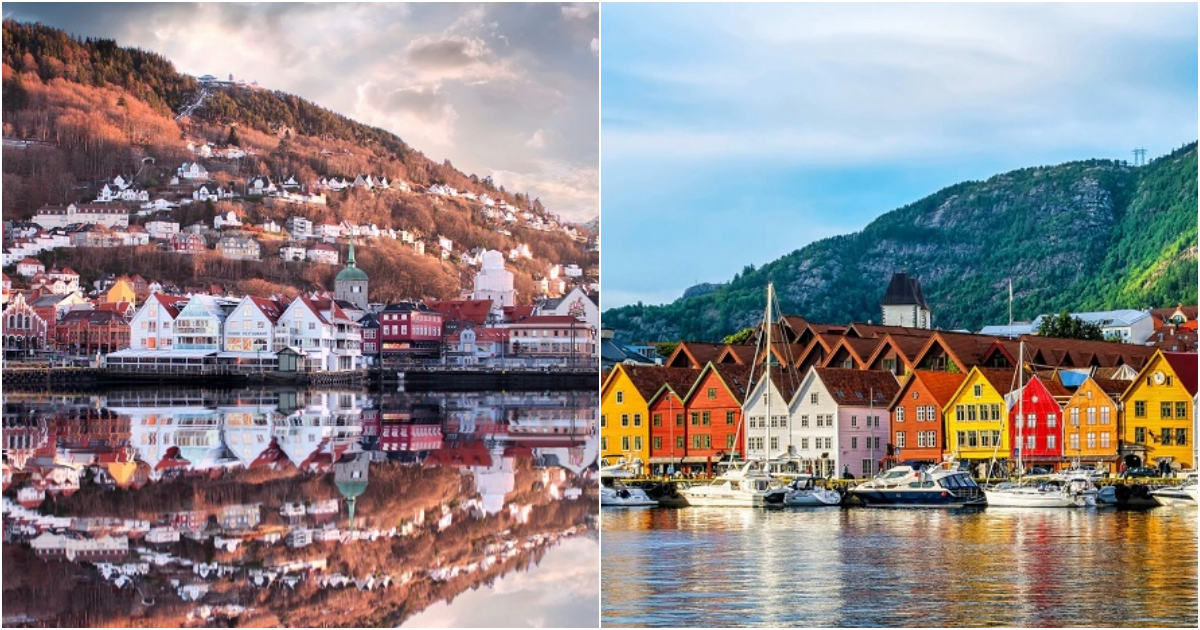
Traveling to Bergen, Norway, and experiencing the beauty of Northern Europe, the city is known as the wettest city in the world as it sits on the edge of the North Atlantic Ocean.
Bergen is the second-largest city in Norway, but it retains the charm of a small town alongside urban features. The houses perched on the hillsides, cobblestone streets, and famous world attractions add to its allure. Being located on the edge of the North Atlantic Ocean, Bergen is known as the wettest city in the world. Below is essential information if you plan to travel to Bergen, Norway!
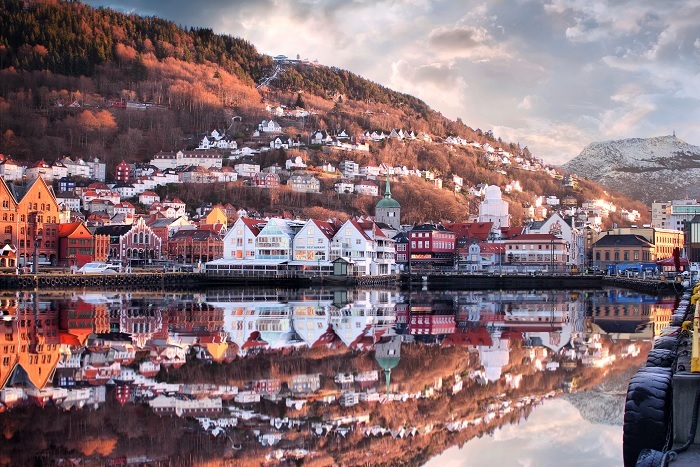
Overview of Bergen, Norway
The city is surrounded by seven majestic mountains, with the highest being Mount Ulriken at 642 meters above sea level. Today, Bergen is considered one of the most famous cities in Norway, offering locals and tourists many options for long walks and entertainment.
During the medieval times in Europe, there was a delicacy that everyone loved: stockfish, dried and wind-dried fish, and Bergen’s Bryggen district was where Hanseatic merchants traded this valuable commodity. The colorful rows of wooden houses dating back to the 18th century are replicas of the original Hanseatic houses. The Fish Market is one of the oldest and liveliest markets in Norway, and nearby restaurants are perfect places to enjoy Bergen’s famous seafood.
What’s Attractive in Traveling to Bergen, Norway?
Bryggen District
If you have only one day to travel to Bergen, Norway, as is the case for most tourists arriving by cruise ship, you’ll first want to visit Bryggen, the UNESCO-listed old town, for a stroll and then take the Fløibanen funicular up to the top of Mount Fløyen for a stunning view of the city, surrounding fjords, and the ocean. Once at the top, instead of taking the funicular back down, you can hike back to town or venture further into the surrounding mountains.
If you have a few more days in town, venture out of the city to explore nearby fjords or visit the city’s art museums. Bergenhus Fortress from medieval times overlooking the Vågen harborfront is another attraction.
Bryggen Wharf
This small historic district along Bergen’s riverfront includes beautifully preserved wooden buildings dating back to medieval times when the city was a significant North European port, part of the powerful Hanseatic League trading alliance and capital of Norway. As a UNESCO World Heritage Site, it is a place where narrow alleys evoke a bygone era, as does the Hanseatic Museum.
Mount Fløyen
Bergen is surrounded by seven mountains, and one of them, Mount Fløyen, can be reached within minutes by taking the Fløibanen funicular. Just steps away from the Bryggen old town, the funicular railway will take you to an impressive viewpoint, where on clear days, you can enjoy views of the city, surrounding fjords, and the ocean. Besides sightseeing, you’ll find guided long hikes, bike rental services, zip lines, and other activities available at the top of Mount Fløyen. Among the long hike options is a trail from Mount Fløyen to nearby Mount Ulriken.
The Fish Market
This is one of the most famous attractions in Bergen, a place that brings together the past and present of the city at its most important historical location, and where it preserves the city’s unique character.
Once a major trading hub in Northern Europe, the fish market now mainly operates as a cultural tourist attraction, reputed for its restaurants and nightlife. Though not large, the Bergen Fish Market is a feast for the senses, with various fish caught from Norway’s local waters, as well as fruits, vegetables, and handicrafts. Situated opposite Vågen harborfront from the Bryggen old town, it continues the long-standing tradition of selling fish along the waterfront of Norway’s busiest seaport.
Touring the Fjords
The Bryggen district isn’t the only UNESCO World Heritage Site tourists come to Bergen to see. The fjords around Bergen are on that list as well.
If you’re traveling to Bergen, Norway, by cruise ship, your ship might go into the Norwegian fjords as part of the journey (many people spend an entire day sightseeing the stunning Geirangerfjord). For those who have more than a day in town, there are plenty of day trips to the fjords. Bergen is situated between two of Norway’s most famous fjords—the Sognefjord to the north (the longest fjord in Norway) and the Hardangerfjord to the south.
Bergenhus Fortress
Located at the entrance of Vågen harbor, this fortress from the 13th century was once a royal residence for the Norwegian kings during the medieval era and remains one of the best-preserved medieval sites in Norway. Tourists can visit the Håkon’s Hall, built by King Håkon Håkonsson between 1247 and 1261 as a royal residence and banquet hall. It is still used for royal dinners and other events. Tourists can also step into the Rosenkrantz Tower, part of which dates back to the 1270s. Its basement contains dungeons for the fortress.
Bergen – UNESCO Creative City of Gastronomy
This part of Norway is renowned for its food and sustainability in culinary culture. There are over 3,000 nearby farmers producing organic food and more than 6,500 people working in the fishing and aquaculture industry. Due to this relationship between food, people, and nature, the city has been honored as one of UNESCO’s Creative Cities of Gastronomy.
Farmer’s markets take place twice a month in Bergen on Saturdays. It is located next to the Fish Market right in the heart of Bergen and is a great place to buy some local fruits and vegetables!
If you’re looking for popular dishes you’ll find in Western Norway, you can rest assured that stockfish will be common on many menus!
Best Time to Visit Bergen
The best time to travel to Bergen, Norway, is during the summer when the weather is relatively warm, and the days are filled with daylight. Being located in the north, the city experiences nearly 19 hours of daylight by late June. Temperatures in July and August can range from 15 to 18 degrees Celsius, creating an enthusiastic and vibrant atmosphere in the city center.
Spring and autumn are also pleasant times to visit Bergen. Just be aware that the weather can be quite chilly, and temperatures can range from -1 to 4 degrees Celsius. Additionally, some attractions in Bergen may close or have reduced hours from autumn to spring as the number of tourists decreases.
A particularly enjoyable time to visit Bergen is on May 17th – Constitution Day of Norway. In a longstanding tradition in Bergen and other places in Norway, locals take to the streets in traditional Norwegian costumes called bunad, and the city has a festive atmosphere. You may not have your own bunad to wear, but according to tradition, tourists are encouraged to dress nicely.
In winter, Bergen is cold and dark, with only a few hours of daylight each day, so consider this when planning a trip to Bergen, Norway during this time.
